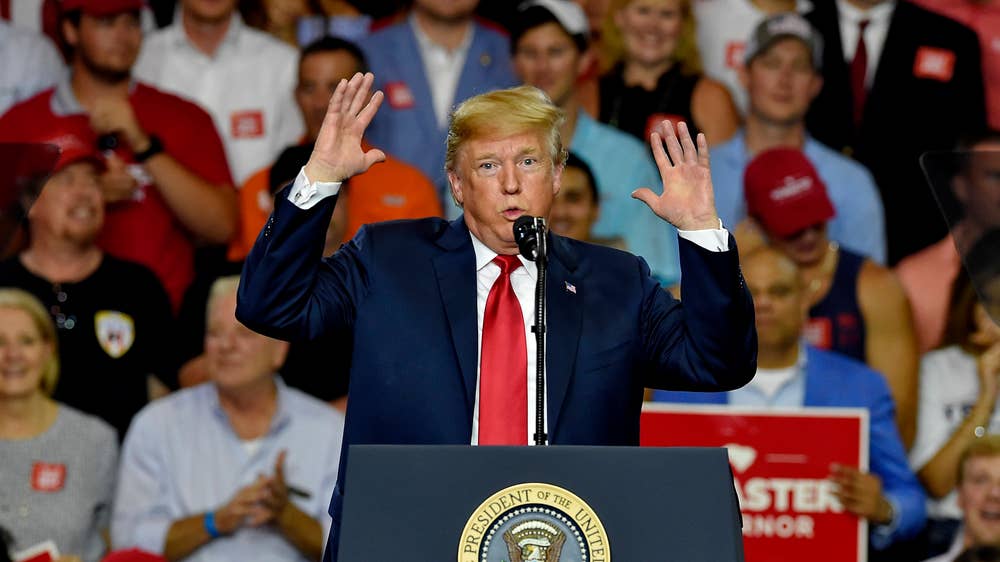All of the likely nominees are likely to be the sorts of people that Trump would trust to 'make the Supreme Court great again' and endorse his conservative, even extremist, prejudices
Justice Kennedy's resignation from the Supreme Court means Trump now has the chance to rule the US for decades to come
If many Americans are, frankly, appalled by what Donald Trump has said and done so far, and pray for the day when he goes – well, they ain’t seen nothing yet.
If Trump gets his next nominee appointed to the Supreme Court of the United States, then that someone will be in office, prospectively, for decades, long after Trump himself has left the White House and, indeed, this mortal coil (I’ll leave you to imagine Trump’s ultimate spiritual destination after that point).
For, after the announcement that moderate “swing” Justice Anthony Kennedy is to retire, Trump now has the golden opportunity to tip the balance of the court in a firmly conservative, Trumpite direction, and for a very long time to come. Many crucial Supreme Court judgements are carried by one vote in this body of nine, and often sway to the moderate/liberal/activist tendency. That will soon switch.
Abortion; gay marriage; race equality; states’ rights; gender orientation; gun controls; torture and terror; police brutality; the franchise; civil liberties; asylum seekers from Mexico. There are no more sensitive issues in America than these. All are crucially affected by famous and long-established Supreme Court rulings, such as Roe v Wade (1973), which liberalised the law on terminations and in effect enforced the civil right of a woman to have control of their own bodies. That, and much else, stands now in jeopardy.
Having last year appointed one conservative, Neil Gorsuch, to replace another conservative (the late Antonin Scalia), Trump preserved the delicate status quo. Now, though, has come the moment many dreaded: when Trump will be able to stamp his own personality on the make-up of the supreme judicial body.
Trump South Carolina rally

4/5
The stakes could scarcely be higher.
So, soon, the Supreme Court will be subjected to what you might call Trumpism by proxy. All of the likely nominees are likely to be the sorts of people that Trump would trust to “make the Supreme Court great again” you could say, and endorse his conservative, even extremist, prejudices. Trump was elected (sort of – he lost the popular vote, after all) specifically to put sympathisers on the Supreme Court, though he has had to bide his time until vacancies arose. Things have moved faster than he might have hoped, and others feared.
The White House has, last year, published a list of some 25 names of judges regarded as suitable to be appointed to the Supreme Court. A mere six are women; all but three are white, so not a promising start for a court that has never been very reflective of the society it passes judgments upon. (The first black justice only arrived in 1967, the first woman in 1981). The potential Trump nominees, the likes of Thomas Hardiman and William Pryor, are now their forties and fifties, and will, quite conceivably, be arbitrating US social policy into the 2040s.
The ghost of Trump will be wearing long black robes and spooking American public life for a terrifyingly long time. Quite the sobering thought.
Any of the 25 could, as some presidential nominees have discovered in the past, be vetoed by the US Senate, another of the US Constitution’s intricate balancing mechanisms. Yet the Republican majority are as determined as the president to see the process through before the mid term elections might jam things up for them.
The record is that judges tend to be rejected because of technical or legal reasons, including one, Douglas Ginsburg, nominated by President Reagan in 1987, when his past use of cannabis was discovered. Others, have been more obviously turned down for partisan reasons, such as Judge Robert Bork, another Reagan nominee from 1987, whose view that school children ought not be taught about evolution took judicial eccentricity onto a new plane.
Trump claims people stop watching NFL to watch his rallies
It’s unfair, genuinely, to believe that any senior judge is the mere puppet of a president. Such is the elegant design of the US Constitution that, once appointed, a Supreme Court justice has absolute security of tenure. Only death, resignation or impeachment can remove them. Some, over time, change their views. Judge Harry Blackmun was a Republican and conservative appointed by Richard Nixon who, who, shortly thereafter, wrote the landmark Roe v Wade judgement.
None of the justices are “biddable”, or should be. None should be rung up by Trump or bullied via abusive Tweets (a concept understandably beyond the ambit of the 1789 Constitution). The justices enjoy a long track record of independence, often angst presidents with a far more substantial political mandate than Trump’s.
However, justices are never completely independent of the political climate. They have to be nominated and approved by elected officials – the president and Senate. They do not exist in a vacuum, where public opinion is irrelevant. In the 1930s, liberals ought to admit, President Franklin Roosevelt tried hard to “pack” the Supreme Court when it obstructed his New Deal policies to get America out of the Depression. He got his way, in the end, but only after winning a landslide for his second term and threatening them with radical change.
Roosevelt indeed had a clever idea for making the Supreme Court friendlier to his policies. If he couldn’t just sack justices or vacancies did not arise for him to pick his “own” judges, then he came up with the notion of appointing additional ones, as the number of justices is not specified by the Constitution, but under normal legislation. He proposed to add justices as the existing ones reached their 70th birthday. It was a fairly blatant attempt at rigging, and ultimately failed, but the combination of his popularity and his constant harassment and bullying of the Supreme Court was enough to get them to bend and compromise.
Just imagine if Trump decided to follow Roosevelt’s example, and win a mandate for judicial reform in the 2020 presidential election. Trump is certainly audacious enough to do so. As I said, you ain’t seen nothing yet.





























No comments:
Post a Comment